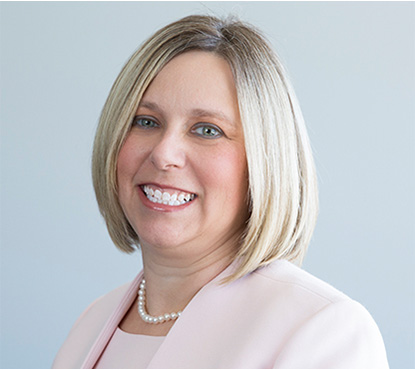


Member of Russell Bedford International, a global network of independent professional service firms.
In this latest episode of Small Business Focus, Tax Manager, Eric Challenger, breaks down the fundamentals of self-employment tax, including what it is, who it applies to and how it’s calculated. Whether you’re a freelancer, sole proprietor or a new business owner, understanding self-employment tax is essential to avoiding surprises at filing time and planning effectively for your finanacial success.
Transcript
Congratulations. You finally started your own business. Years of working for somebody else are finally over. Now you set your own schedule and reap 100% of the profits from your hard work. Unfortunately, what they don’t tell you is that even though you don’t have any traditional payroll, you still have to pay payroll taxes on your self-employment income in the form of the dreaded self-employment tax. Many new business owners are unaware of this tax and feel bamboozled by their accountants when they go to file their returns for the first time and are notified of this extra tax.
Self-employment income is the earned income derived from the business operations for people who operate as independent contractors, freelancers, sole proprietors, single -member LLCs, and some other small business owners. All SE income is subject to SE taxes. Typically, this applies to all business owners who are either disregarded entities or partners in a service partnership. Disregarded entity is a business that, one, has a single owner or two, not organized as a corporation or three, not elected to be taxed as a separate business entity. Even if you have elected to be treated as a partnership, you may still be subject to SE taxes on your flow through SE income.
SE tax is essentially payroll tax, charged at the individual level on Form 1040 to disregarded entities and partners receiving flowed through SE income. SE tax is comprised of two parts, Social Security tax and Medicare tax. As an employee, you would consistently see those extra withholdings on each check in tandem with your income tax withholdings. What you didn’t see was that your former employer was paying a matching amount on those taxes to the government. What? They were paid twice? Yes. And as the owner of your business, acting as the employer and the employee, you now get to pay both sides to a whopping total of 15.3%. The Social Security tax makes up 12.4 % and the Medicare tax makes up 2.9% for the total 15.3. However, there is some relief as the Social Security tax is capped annually after achieving a certain wage base. For 2025, that limit is $176,100. But you still have to pay the 2.9 % on the amount over that, and the Medicare tax bumps up to an additional 3.8 % for people making over $200,000 if you’re single or $250,000 if you’re filing jointly.
SE tax is calculated on your net income from operations of your business. Net income includes all of your offsets and proper business deductions, including one half of the SE tax, the employer’s side. Net income for disregarded entities is calculated on your Schedule C, profit, or loss from business. For partners in a partnership, it is flowing through your K-1, line 14, and reported on Schedule E, page 2. The tax itself is calculated on Schedule SE and includes all your SE income from all sources.
Although the tax is calculated on your return, you are required to pay as you go using the estimated tax payment system. For more information on how to make estimated taxes, please check out our other newsletters and audio blogs on the subject. Hopefully you’ve stumbled on to this article while doing your homework for starting your own business. For those of you researching after you’ve already gotten your tax bill, I’m sorry. For next year, seek out the small business experts at CK to help you better understand your SE tax requirements and how to prepare for them in advance. For more information, on small business tax topics, please visit our website at www.craykaiser.com or give us a call at 630-953-4900. Thank you for listening.
The recently signed “One Big Beautiful Bill” brings tax changes for employees and business owners, especially when it comes to the reduction of taxes on tips and overtime. While most people have heard about those changes, the law includes several important details that will affect your taxes in both 2025 and continue through 2028.
Here are some of the key takeaways for the new rules on tips and overtime pay:
Under OBBB, employees and self-employed individuals working in tip-based industries may now qualify for a tax deduction on tips. Here’s what you need to know:
The OBBB also adds a deduction for overtime pay, designed to give relief to middle-income workers. Here’s how it works:
If you earn tips or overtime pay:
If you manage payroll or own a business:
As with any new tax law, expect there to be clarifications as we near year-end. The professionals at Cray Kaiser can help you understand how OBBBA may impact your 2025 taxes, whether you are an employee, contractor or business owner. Contact us today to prepare your tax strategy for 2025.

Senior Tax Accountant
The President signed the “One Big Beautiful Bill”, a piece of legislation that cements many tax provisions for individuals and families.
If you’ve been following tax policy, you know that many provisions from the 2017 Tax Cuts and Jobs Act (TCJA) were originally set to expire at the end of 2025. This new bill changes that and makes several tax benefits permanent and introduces new deductions.
Below we break down the key individual tax changes you need to know for 2025 and beyond.
Before the TCJA, the highest federal income tax rate was 39.6%. The TCJA temporarily lowered it to 37%. Under the OBBBA, that rate and the entire tax bracket structure has been made permanent.
What does this mean for you? If you’ve been planning around a possible rate increase in 2026, you can breathe easier because these brackets are here to stay.
The enhanced standard deduction, originally increased under the TCJA and indexed for inflation, will remain permanent and has been increased again for 2025:
Beginning in 2025, a new, temporary federal deduction is available for seniors aged 65 and older. This deduction will phase-out at higher income levels and is available whether you claim the standard deduction or itemize:
Families with children will see an increase in their Child Tax Credit. Beginning in tax year 2025, the credit will increase by $200 per qualifying child, bringing the total to $2,200 per child. This change is permanent.
Beginning in 2026, taxpayers who don’t itemize deductions can still claim up to $1,000 for individuals and up to $2,000 for Married Filing Jointly for certain charitable contributions.
Now is the time to review your 2025 tax plan. With lower rates and new deductions, you may be able to reduce planned tax payments for the remainder of 2025.
At Cray Kaiser our team is here to help you navigate these changes. Contact us today to discuss how these 2025 tax updates might impact your unique financial situation.
In this first video in our series about supporting college foundations, Dan Swanson, Assurance Manager, shares his passion for helping college foundations fulfill their missions. With more than a decade of experience in the firm and a lifelong connection to education, Dan explores the unique financial challenges and opportunities that college foundations face.
Transcript
Welcome everybody. I’m very excited to be here today. My name is Dan Swanson. I am an Assurance Manager here at Cray Kaiser. I’ve been with the firm for about 12-13 years now, and I wanted to talk about a subject matter that I’m very passionate about. And that is college foundations and some of the important factors that we need to be considering, some of the hot topic issues. I want to talk about some success stories, some issues that they commonly face.
One of the reasons I’m very passionate about this, because we always hear that question, if I wasn’t an accountant, what would I be doing? You know, I’m a big fan of education, my parents were teachers, I have brothers that are teachers, so if I wasn’t an accountant, I would be a teacher. So by serving these college foundations, I feel like I get the best of both worlds. I’m helping students, while getting to use my accounting knowledge and expertise. So, it’s very near and dear to me. So, I wanted to kind of talk about foundations and how we here at CK have helped foundations in a number of different areas.
So, when you think of college foundations, what do you think about? You know, what are some of their big struggles? What are they? What’s their mission? What’s their vision? What are their values? So, with college foundations is they get funds, they get dollars, they get money, they get to invest, and hopefully those earnings, it earns returns, which then turn into scholarships, turns into real dollars for real students to pay for real education. So sounds simple, but if you only had like two or three scholarship funds, not a big deal, but some of our clients that we serve have over a hundred different individual unique scholarship funds or program funds and they have millions of dollars of investments. So how do we ensure that everybody’s getting their fair share of these investment earnings. How do we ensure that the financial statements are telling an accurate story to the board, to the executive director, to the finance committee, to all those involved to make sure the end to the day, the maximum amount of dollars are going out to students to serve the mission.
A big thing that I see with a lot of these foundations is the budgets. Every year, the board, the finance committee comes up with budgets. How much are we going to budget to spend out in scholarships? How much are we going to budget for various, just kind of general expenditures? So how do we make sure on a monthly basis our budgets to actual are being monitored and tracked and appropriately recorded. So that’s the overall goal. That’s the overall purpose of what we here try to accomplish when working with foundations.
The board, the finance committee spends a lot of time coming up with budgets. Whether it’s kind of revenue budgets based upon donations that are coming in or investment earnings. But it’s also some of those management in general costs, you know, because we all know that there’s some just overhead that they need to cover. They need software, they need to pay for people, supplies, printers, etc. So, it’s not 100 % of it’s not going to scholarships. There are these overhead manager, we try to minimize it or they try to minimize it, but there are those costs. So a good way to kind of monitor and track that is through like is through budgets.
So how do we make sure as expenses are being incurred and checks are being cut, that we’re matching up the right expense item to the right budgeted line item. Seems simple but it can get it can get kind of tricky depending on the volume of invoices and who’s coding the invoices. You know, are we consistently coding this vendor to this budgeted line item? So again, what I like is kind of being on the outside is we’re that second set of eyes. You know, we can go in there and kind of build some of these expenses and enter your payables and run your checks for you. But you know, you are the kind of the initial person at you being the foundation, but we’re that second set of eyes. Hey, did you think about that? Did you think about this? Does this match up with the budget? And then we can kind of catch some inconsistencies in real time. And as we catch them, we can try to implement best practices because consistency is key. So, if we can implement these best practices, we’re consistent. And then the financials, again, tell the story. If you have any questions that you would want to ask me, you know, please feel free to reach out. You can go to the Cray Kaiser website and you can find me again I’m Dan Swanson. I’m an assurance manager here.
Welcome to the first episode of Small Business Focus with CK, where we explore practical topics to help entrepreneurs and self-employed individuals navigate the financial side of running a small business. In this episode, Tax Manager, Eric Challenger discusses the essentials of estimated taxes, including what they are, who needs to pay them, how to calculate them and when they’re due. Whether you’re a freelancer or a business owner, understanding estimated taxes can help you avoid penalties and better manage your cash flow throughout the year.
Transcript
Hi everyone and welcome to another edition of Small Business Focus with CK. I’m Eric Challenger, a tax manager here at CK and today’s focus topic is estimated taxes. Estimated taxes are payments made throughout the year to the government for income that is not already subject to automatic withholding. These payments help taxpayers avoid a large tax bill when they go to file their return.
As an employee, estimated tax payments are normally not needed. That’s because employers are required to withhold and remit taxes to the IRS on behalf of employee wages. Normally, this automatic withholding fulfills the burden of paying in taxes and eliminating the need for estimated tax payments. However, individuals that earn income not subject to withholding such as freelancers, self-employed persons, business owners, or others with income from investments, rental properties, or other sources will need to make estimated tax payments.
Estimated taxes are calculated based on projected current year taxable income. This requires understanding of your estimated income, deductions, and then applying related IRS tax tables to the estimated amount. You can use online calculators, tax software, or a tax professional to assist you with determining your estimated tax liability.
The IRS is a pay-as-you-go system. For wages, this means every check you earn will have your share of taxes withheld and then remitted by your employer. For all other taxpayers, the IRS requires that you make quarterly estimated tax payments based on the following schedule. First quarter, April 15th, second quarter, June 15th, third quarter, September 15th, and fourth quarter, January 15th of the following year. Any remaining balance must be paid by the return filing deadline of April 15th of the following year. Although you may extend the filing date of your return, you cannot extend the payment due date.
Yes, as we stated before, the IRS is a pay-as-you-go system, and you must pay in taxes quarterly if you do not have any other withholding mechanism. Failure to pay your taxes timely will result in the IRS charging you underpayment penalties. This is really just another form of interest on the underpaid balance. This is applied at the current IRS interest rate multiplied by the number of days late. In addition, if you fail to make any payment by the filing deadline or fail to file your return timely, you may also be subject to late payment penalty and failure to file penalty. Each have a maximum penalty of an additional 25% of the unpaid balance due.
Yes. The IRS understands that tracking your current and your income in related taxes isn’t always easy or an exact science, especially for small taxpayers. To help ease this burden, the IRS has a safe harbor policy. Under the safe harbor, you have two ways to meet the exception for being assessed underpayment penalties. There are as follows. Number one, the current year safe harbor exception. If you pay in at least 90% of your current year tax and make the remaining 10% by the filing deadline of April 15th, then you will avoid underpayment penalty. However, this requires accurate tracking of your current year income and tax. This may be hard to do if you’re not a tax expert. Number two, the prior year safe harbor exception. The IRS will not assess underpayment penalties for taxpayers that paid 100% of their prior tax. For taxpayers with prior year adjusted gross income, AGI, greater than $150,000, this amount needs to be 110% of your prior tax.
Well, in years of rising income, it’s best to use the prior year rule to ensure that you at least meet the prior year test. Any remaining amount due will not be penalized if you pay by the filing deadline of April 15th. In years of declining income, it’s best to use the 90% of the current year income, although this requires additional planning and accurate calculations. In most cases, it is better than overpaying the government and reducing your working capital or cash flow.
In summary, estimated taxes are designed to spread out to tax burden over the year. They apply mainly to self-employed individuals or people with income not subject to withholding. By making quarterly estimated tax payments based on your income, you can avoid underpayment penalties and manage your taxes more effectively. This has been another edition of the CK Small business focus. We hope our discussion on estimated taxes has given you some guidance you can implement in your tax planning for next year. For additional knowledge and understanding please visit our website at www.craykaiser .com.

CPA | Senior Tax Accountant
As you know, the President signed the One Big Beautiful Bill Act on July 4, 2025. This brought significant changes in the areas of depreciation and related deductions that will impact your taxes in 2025 and beyond.
Below we’ll summarize the most important depreciation changes under OBBBA, including bonus depreciation, Section 179 expensing and a new 100% depreciation election for certain real property.
Note: For a more comprehensive overview of bonus depreciation and section 179, see our previous blog post on the topic here.
Bonus depreciation allows businesses to deduct a large portion or all of the cost of assets in the year they’re purchased.
Key Details:
The Section 179 deduction allows businesses to immediately expense the full cost of qualifying assets purchased, subject to annual limits.
OBBA Changes:
OBBBA introduces a new 100% deduction for qualifying real property used in production facilities that produce qualified tangible personal property (TPP).
Application of this provision will be complex and IRS guidance will need to be issued. In short, if a taxpayer produces tangible goods and begins building a new manufacturing facility after January 20, 2025, then 100% of the cost of the portion of that facility dedicated to manufacturing can be deducted in the first year.
Key Details:
The IRS is expected to issue guidance and clarifications on these provisions, which could take months. While we usually start looking at year-end tax planning in Q4, now is the time to talk with your advisor about the impact of the bill on your specific situation. In particular, you may be able to reduce planned tax payments for the remainder of 2025 given the benefits you’ll see in the bill. At Cray Kaiser we’re here to help you understand how these changes may affect your business and ensure you make the most of these new depreciation opportunities. Contact us here or call us at 630.953.4900.
In this video, Brian Kot, a Principal at CK, shares valuable insights into the most common questions clients ask about tax planning, document retention, business sales and financial reporting. From strategies to reduce your tax liability and organize your financial records to best practices when selling your business and improving accounting processes, Brian highlights the importance of proactive planning and collaboration with your CPA.
Transcript
My name is Brian Kot and I am a principal with Cray Kaiser Ltd. I’m often asked by my clients, “How can I reduce my tax liability?” The answer to this question comes with a lot of strategic planning between the client and your CPA. You want to at least minimally have an annual meeting with your CPA to discuss your tax situation and your financial planning on what’s going on with your business.
There are many suggestions typically that are offered such as contributing to an IRA or a sub-contribution or vehicle expenses might be missed or maximizing the depreciation deductions and purchasing certain assets within your business. In that conversation, it’s also very important to discuss the current tax rates and future tax planning. For example, you may want to try to defer income, or you might want to accelerate certain income to maximize current tax rates that are in effect today, for example, the capital gains tax rate. So having an effective meeting with your CPA in discussing these strategies is the optimal way of reducing your taxes, and it’s different between each individual and organization.
I’m often asked how long should I keep my documents for, especially in this age of digital world. The answer depends on the type of organization and also the type of documents that we’re discussing. Some documents you need to keep indefinitely, such as your corporate resolutions, your bylaws, your tax returns, your financial statements. We should always keep those forever and never destroy those and keep them in a digital format. There are other documents such as a lot of payroll documents need to be kept for a minimum of seven years and then there’s other documents especially on the individual side that you only need to keep for only three years and it also depends on the statute of limitations on how long you need to keep these documents for. I definitely recommend you check out our website if you click on the resource tab and search document retention. We have a guide that explains and gives an example of what documents you should keep either indefinitely or for seven years and remember that’s just a guide but it can be used as a rule of thumb.
You’re considering selling your business and often I’m asked how much do I owe in taxes? That’s a very challenging question to answer right off the bat, and a lot of planning needs to go involved. The first thing is to determine the market value of your business. And we recommend that you use an outside third party to assist you in determining the market value. Once the market value is determined, the way that the deal is structured and the sale is put together will significantly have an impact on how much you will pay in taxes, along with your personal tax situation. So we recommend before you, at any time, sign any agreement or sell your business. You consult with your tax advisor to go over that agreement in detail to determine if it is the most cost and tax efficient way for you to sell your business. Too often, we hear after the fact that our clients may have sold their business, or for that matter, entered into any type of a transaction. And if you would have consulted your tax advisor before entering that transaction, you may have saved a significant amount of taxes, as the transaction could have been structured differently.
Often, my clients will ask me, “How can I improve my financial reporting or get more timely reports, or I’ve lost my accountant, what do I do?” Here at Cray Kaiser, we have a dedicated team to assist you in your financial reporting. If you use a software such as QuickBooks or similar to QuickBooks, we can offer training on the program to ensure your employees properly know how to use the software. And we can also offer customization and create customized reports to help you understand your business. Having timely and accurate financial information available to you will enable you to make business decisions and help you grow your business.
Please consult a member of Cray Kaiser to understand the benefits that we can offer your organization to help you improve your financial reporting. Please review our website at craykaiser.com as we recently launched our Client Accounting Advisory Services webpage. You can find more information there and you can contact a member of our team at 630-953-4900.

CPA | Senior Tax Accountant
The One Big Beautiful Bill Act was signed into law on July 4th, introducing significant tax changes that could directly affect your 2025 tax return. Two key deductions that you will want to take advantage of starting in 2025 are the new interest deduction on auto loans, and the increased state and local tax (SALT) deduction. Below we break down exactly how each deduction works, who qualifies and how they may impact your overall tax strategy.
Beginning January 1, 2025, individual taxpayers may deduct up to $10,000 of interest paid on qualifying auto loans.
To be eligible for this deduction, autos must:
This deduction does not apply to:
The deduction phases out for taxpayers with:
Phaseout formula: The $10,000 maximum deduction is reduced by 20% of the amount your income exceeds the applicable modified AGI.
Example:
If you are single and have a modified AGI of $120,000, you exceed the threshold by $20,000.
For tax years beginning after December 31, 2024, the SALT deduction cap increases from $10,000 to $40,000 for individual taxpayers who itemize.
Full deduction applies if your modified AGI is below:
Beginning in 2026, the cap will increase by 1% annually through 2029. The $40,000 maximum deduction is reduced by 30% of the amount your income exceeds the applicable modified AGI.
Example:
A couple filing jointly with a modified AGI in 2025 of $510,000 exceeds the limit by $10,000.
This deduction will return to a $10,000 limitation in 2030.
Many states have introduced Passthrough Entity Tax (PTET) credits to bypass the old $10,000 SALT cap. With the cap now higher, states may reconsider their PTET policies, potentially impacting how your state taxes are calculated if you own a partnership or S-corporation.
If you have questions about these new deductions or any of the provisions in the OBBB Act, the team at Cray Kaiser is ready to help you understand the potential impact on your personal or business taxes. You can contact us here or call us at (630) 953-4900.

CPA | CK Principal
Corporate credit cards are a valuable tool for businesses. They simplify purchasing, make expense tracking easier, and give employees flexibility to do their jobs. However, with this convenience comes the responsibility to ensure that these cards are used wisely and ethically.
That’s where a clear credit card policy and the right technology come in. Together, they help protect company resources, reduce fraud and build trust across the organization.
A strong credit card policy serves as both a safeguard and a roadmap. It clearly sets expectations for appropriate usage and explains the reasons behind the rules. When paired with expense management platforms such as Bill.com, Expensify and Ramp, to name a few, it can provide solutions to track transactions in real time, flag suspicious activity automatically, and simplify reporting and receipt collection. This combination of policy and technology gives finance teams the ability to detect irregularities before they escalate into larger issues, along with fostering transparency, accountability, and trust, ensuring that employees understand not only how to use their cards, but also the rationale behind the guidelines.
To create an effective policy, organizations should begin by considering both the operational needs of their teams and the inherent risks associated with credit card programs. This thoughtful approach lays the foundation for a culture of fiscal responsibility.
Technology makes monitoring and enforcement easier. Sometimes, business applications may require specific credit cards, so app selection should align with company policies. The right tools give firms both flexibility and control over purchase and expense management.
A clear, well-communicated policy, supported by the right technology, protects companies while giving the employees the resources they need to succeed. For more information on strengthening your credit card policies and integrating technology into your accounting systems, please contact Cray Kaiser.

MSA | Senior of Accounting Services
As your business grows, financial decisions become more complex and more critical. Clear reporting, stronger internal controls and a plan for the future are essential. But hiring a full-time Chief Financial Officer (CFO) or Controller can be costly.
The good news? You don’t always need to add expensive executives to your payroll. Outsourced CFO and Controller services provide the expertise you need, when you need it, without the full-time expense.
Partnering with an outsourced accounting firm gives you access to executive-level financial leadership, tailored to your business’ needs. This flexible solution ensures you have the correct level of support.
With an outsourced CFO or Controller, your business can achieve:
Outsourcing doesn’t just reduce costs, it increases insight and efficiency. Businesses that leverage outsourced CFO and controller functions gain a competitive edge and the freedom to focus on what matters most: running your business.
If you want clarity, confidence and sustainable growth, outsourcing your CFO and controller functions may be the smartest financial decision you make this year.
Whether you’re a startup preparing to scale or an established business seeking better financial discipline, fractional CFO and outsourced controller services can provide the expertise you need without the full-time cost.